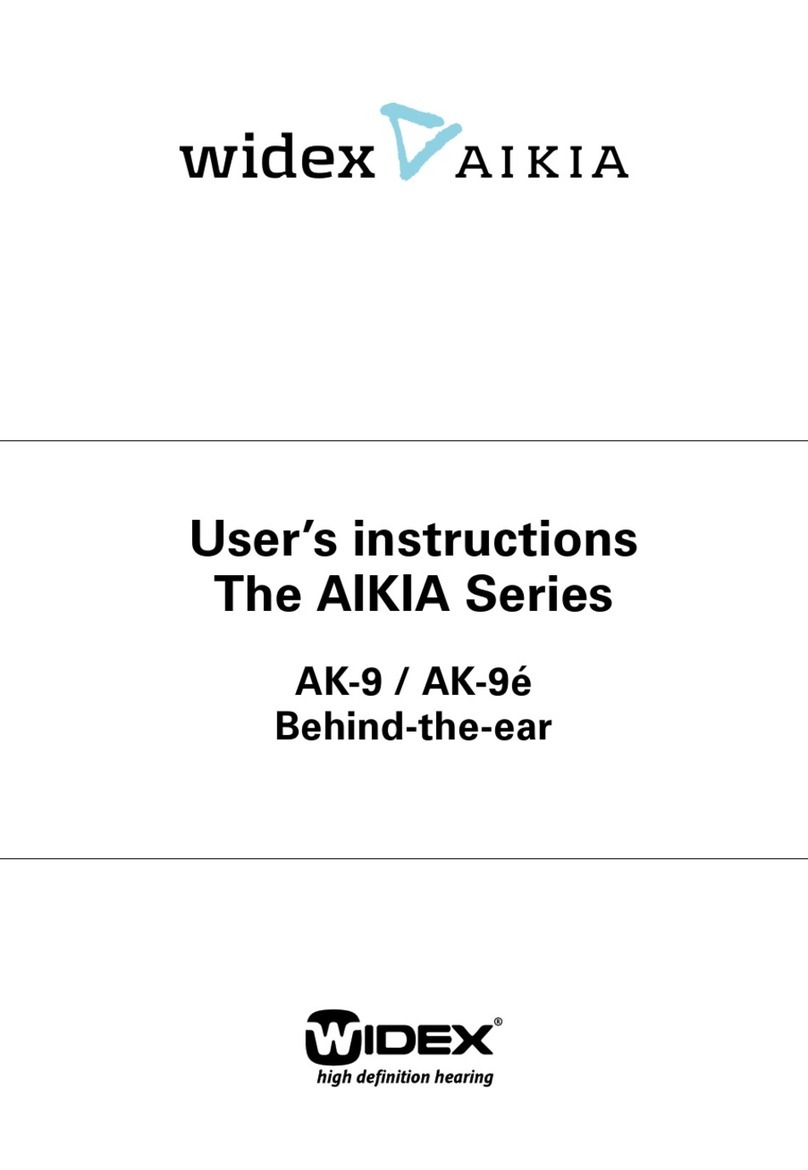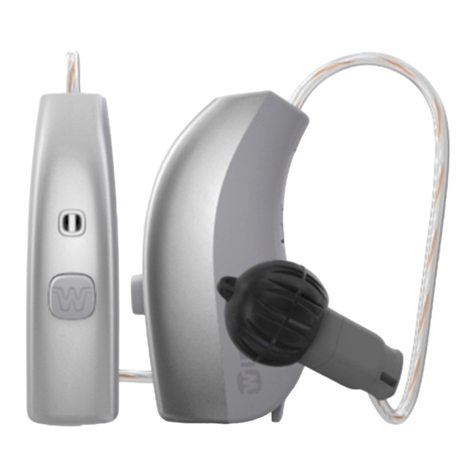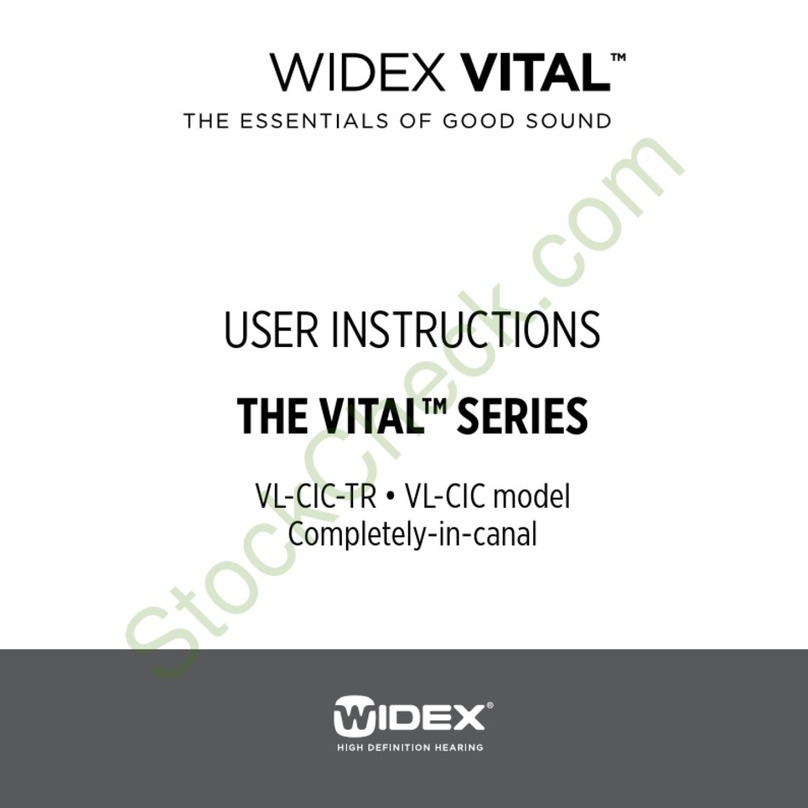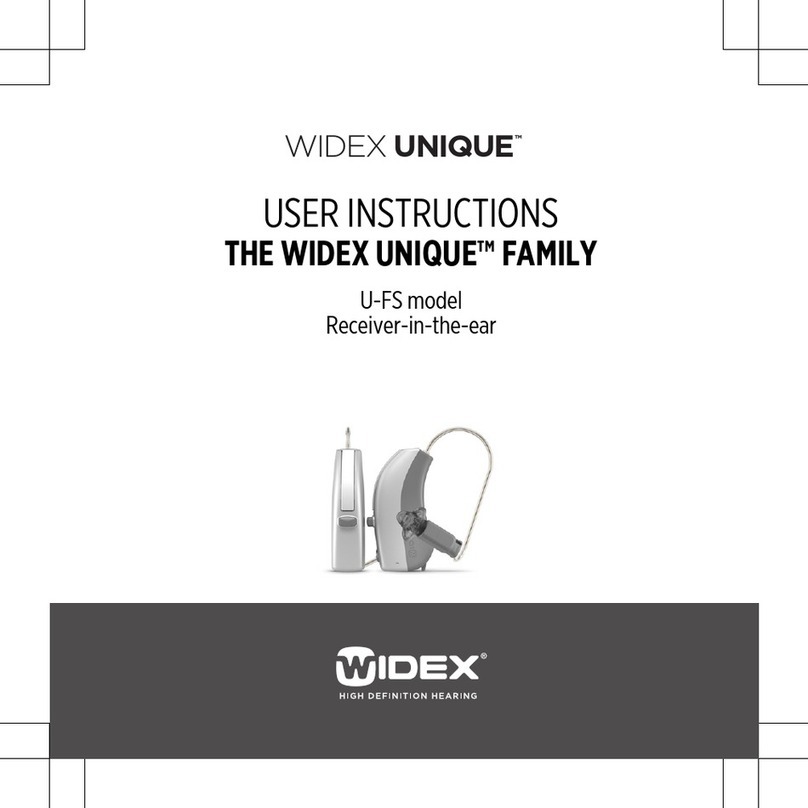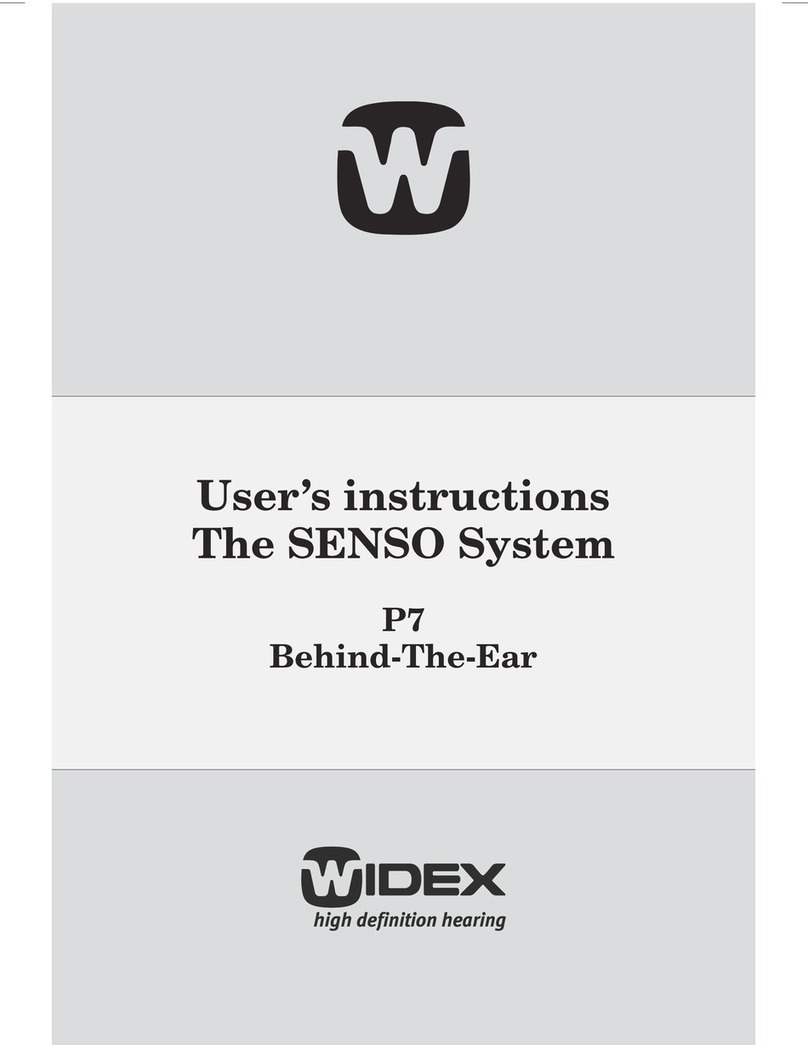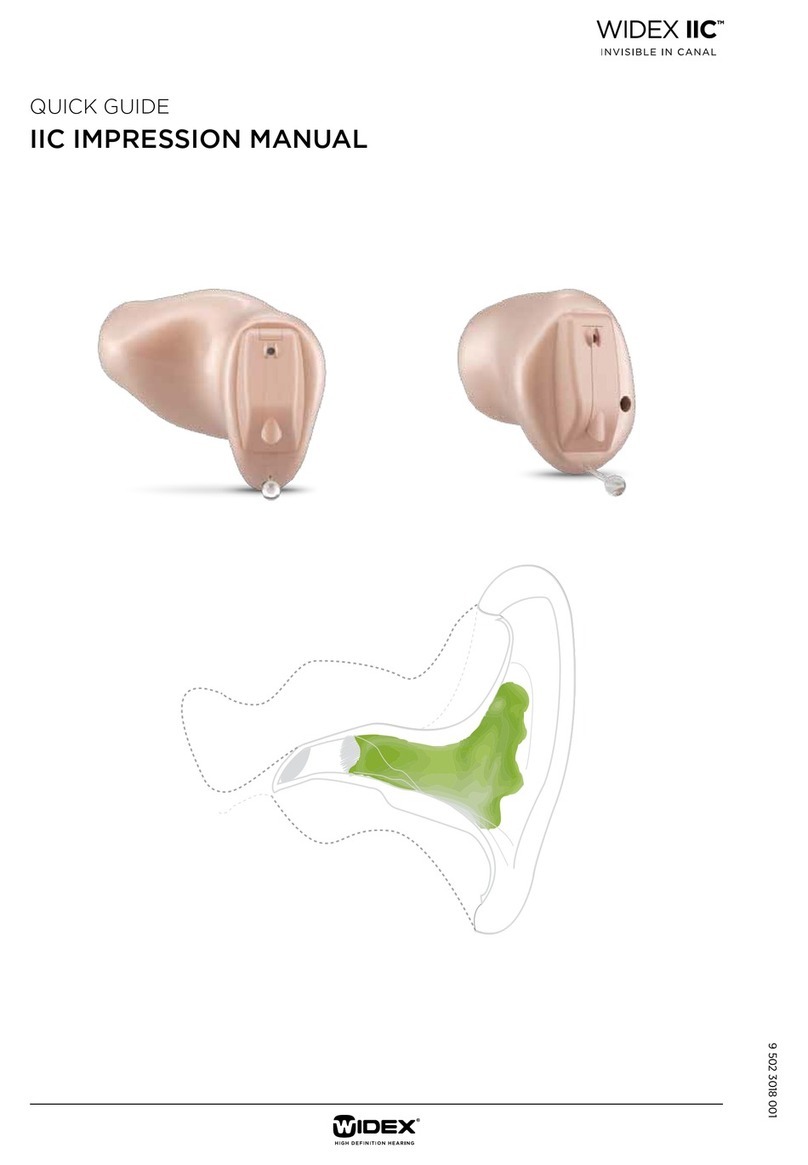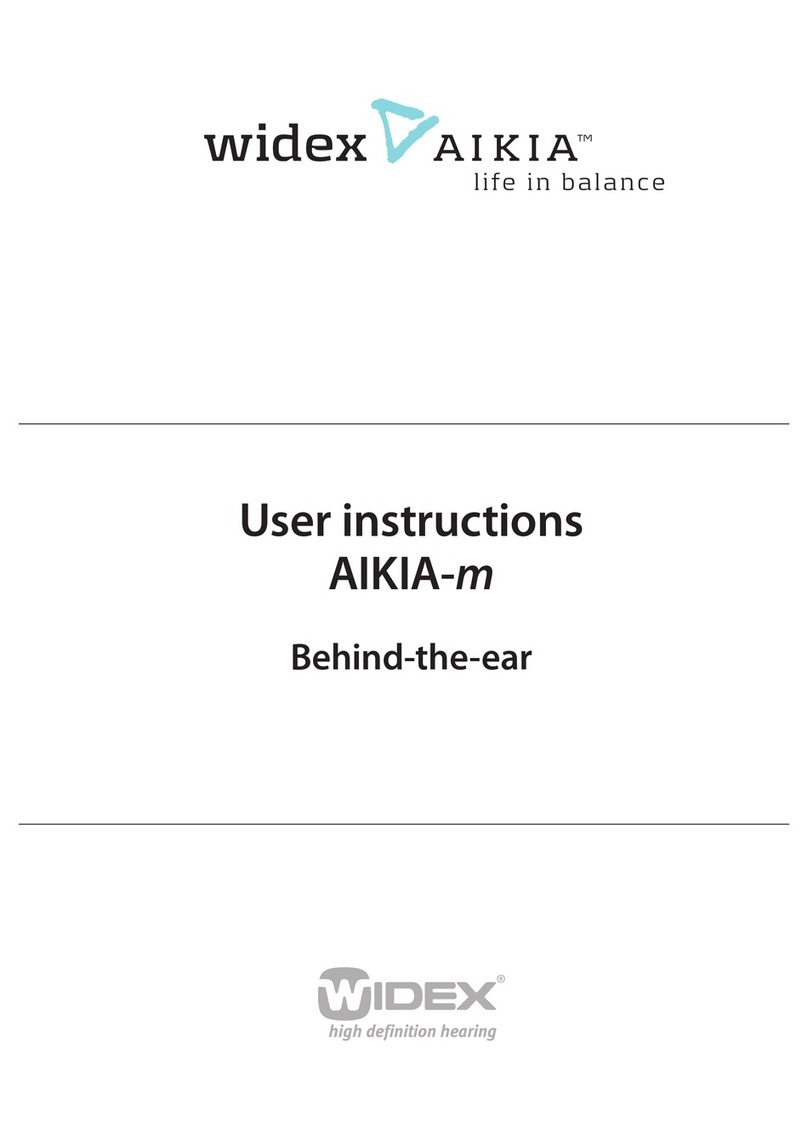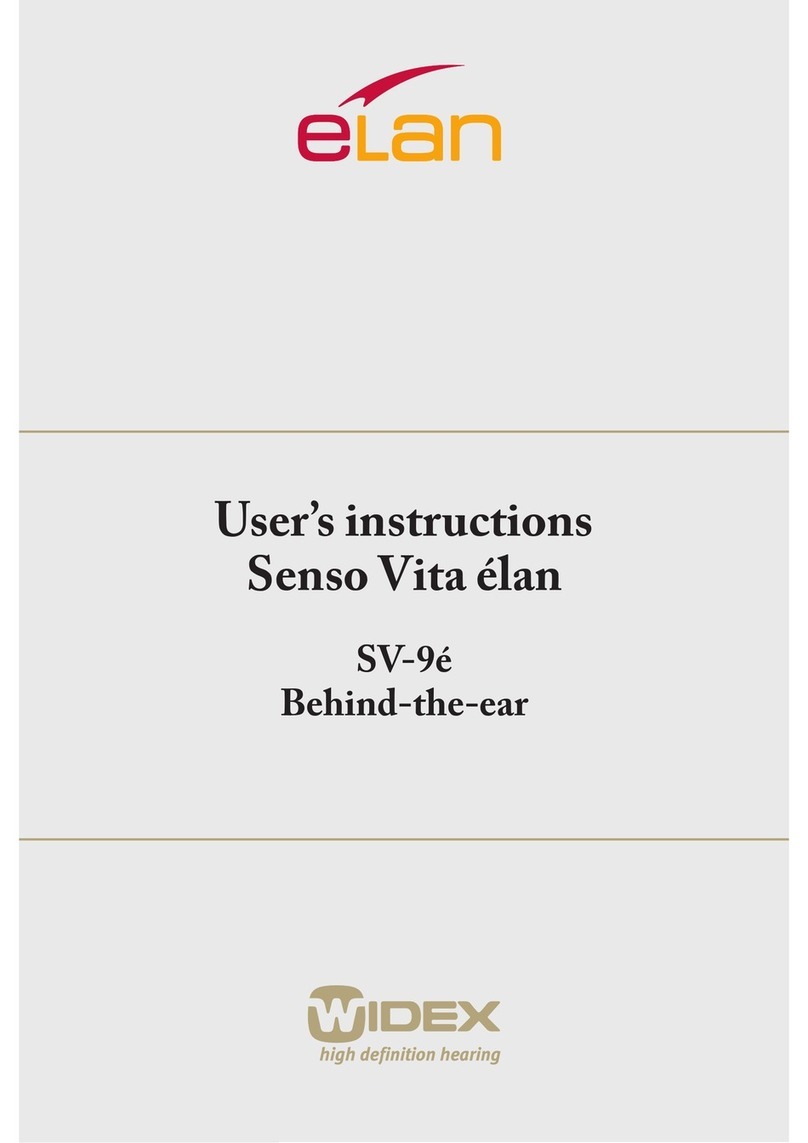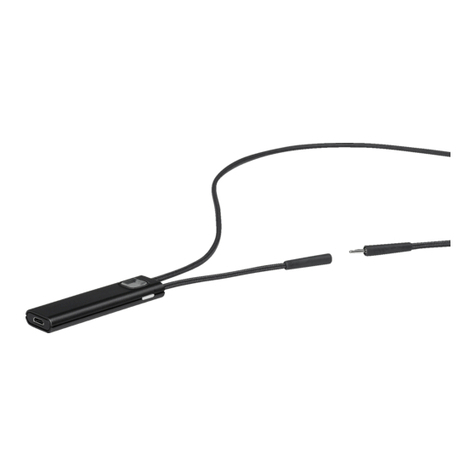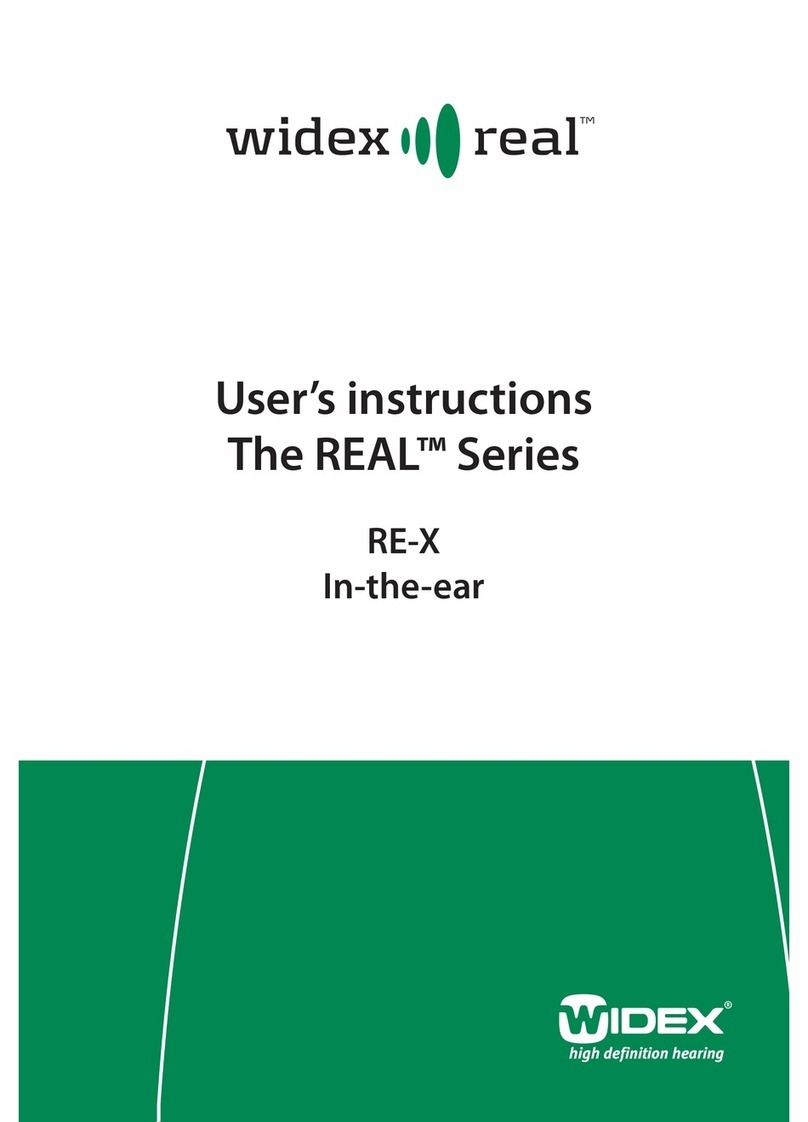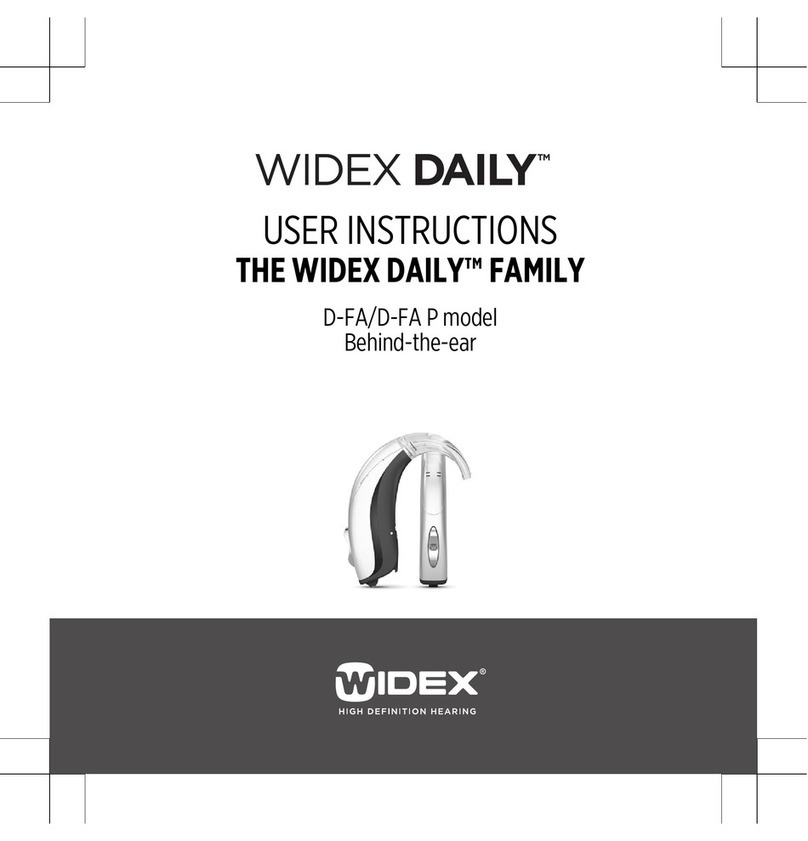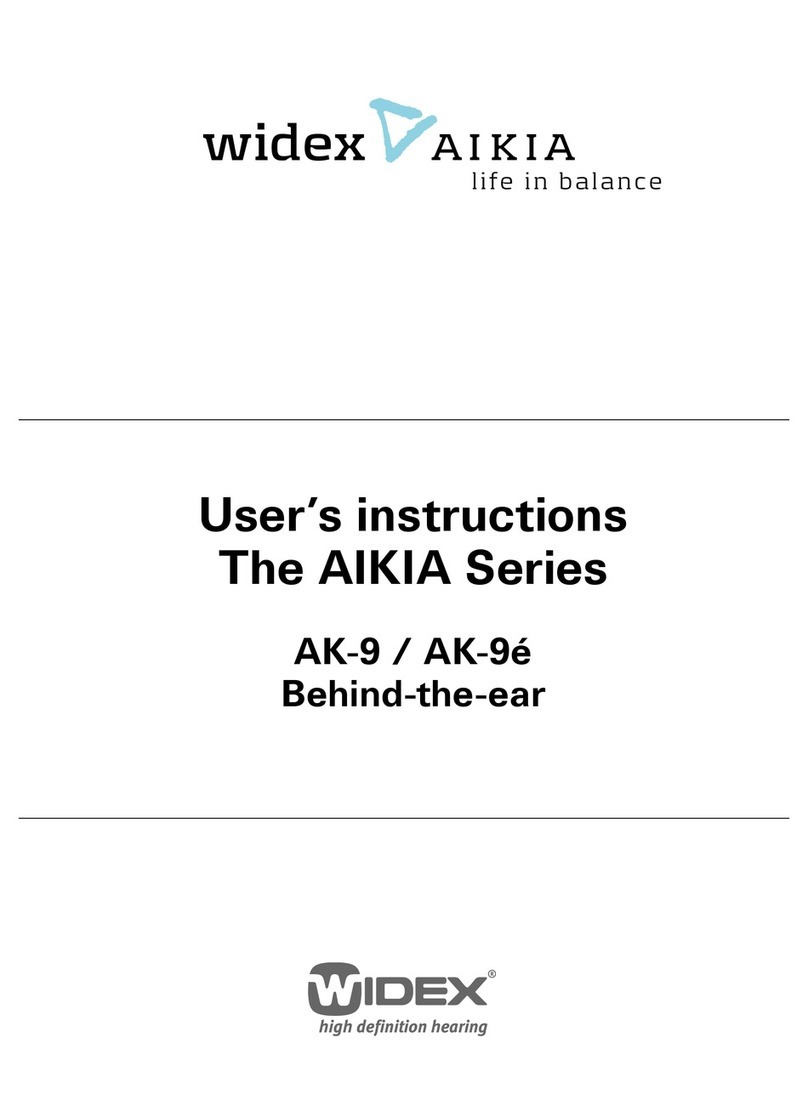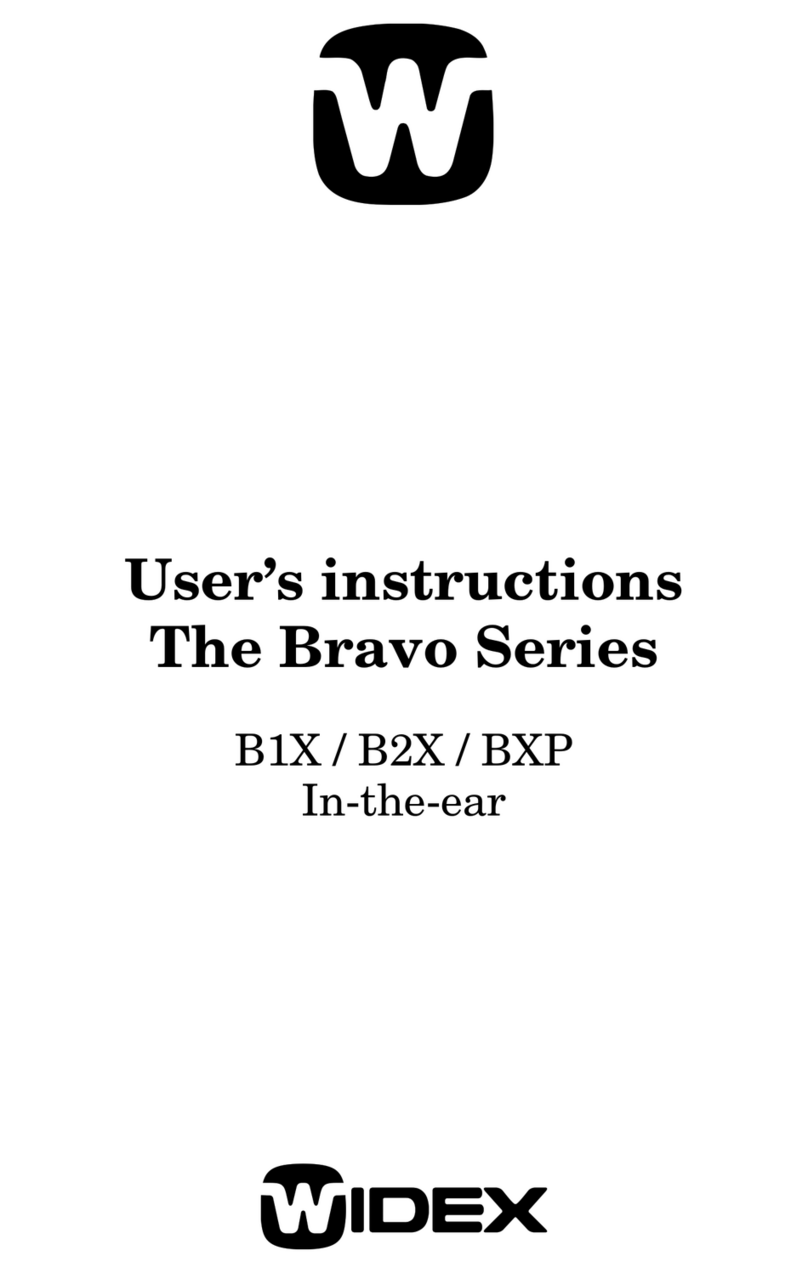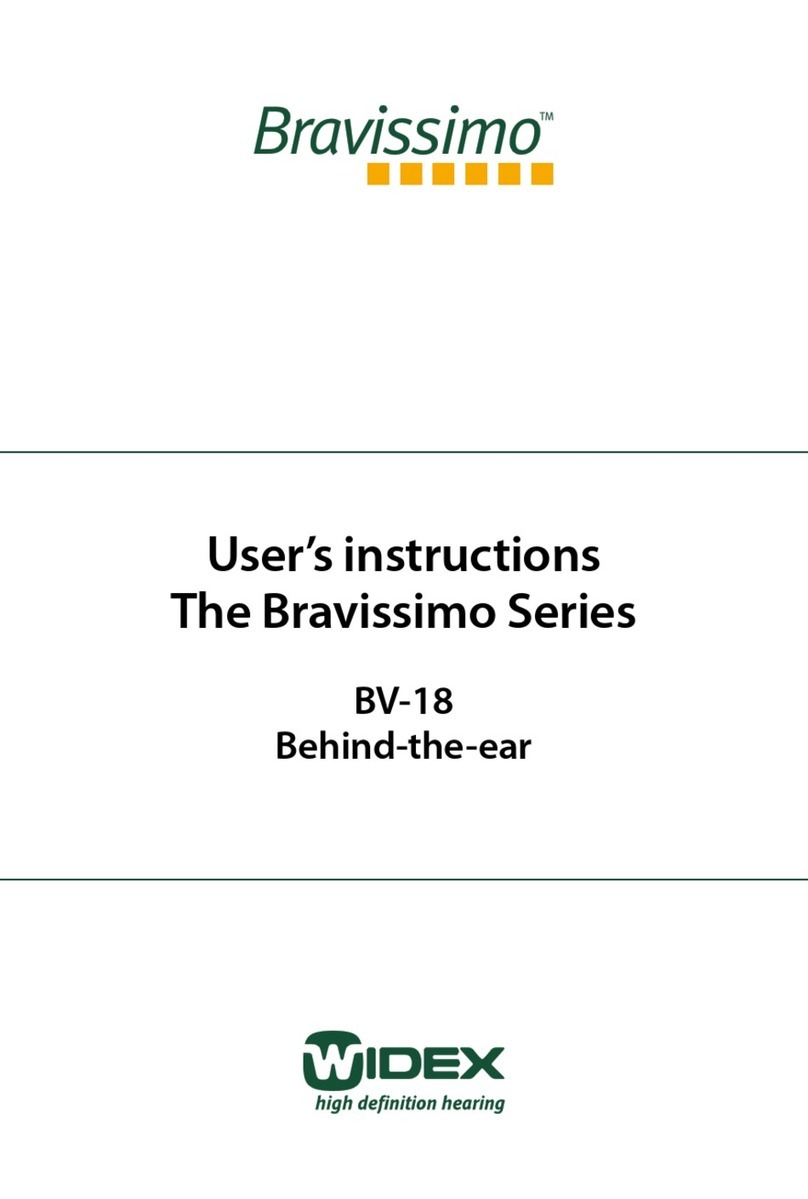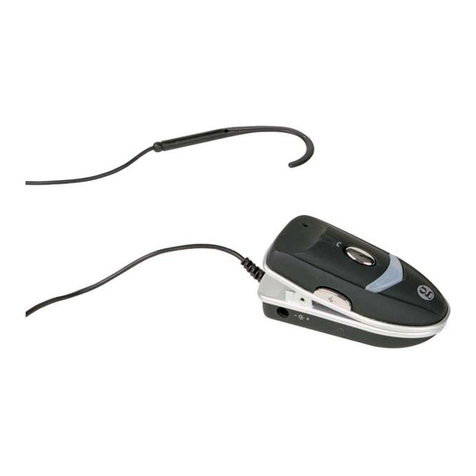Your hearing aid, earmould and accessories may
not look exactly the same as in these user’s instruc-
tions. We furthermore reserve the right to make
any changes considered necessary.
Hearing aids and their accessories
should not be disposed of with normal
household waste. Please consult your
national Widex distributor for advice
on how to dispose of your hearing aid.
Contents
YournewInteohearingaid ................................... 4
Inteo(IN-19)............................................... 5
Thebattery................................................. 6
Batterytype............................................. 6
Insertingthebattery...................................... 7
Changingthebattery ..................................... 9
Turningthehearingaidonandoff............................11
Left/rightidentification.....................................12
PlacingInteoon/intheear...................................13
Possible settings when turning on your hearing aid . . . . . . . . . . . . . 14
RemovingInteo............................................15
Automatic adjustment of loudness. . . . . . . . . . . . . . . . . . . . . . . . . . . . 16
Finetuningloudness........................................17
Listeningprograms.........................................19
Switching between the listening programs . . . . . . . . . . . . . . . . . . 23
KeepingInteoclean.........................................25
Cleaningaccessories.....................................25
Thehearingaid......................................... 26
Theearmould........................................... 27
Caringforyourhearingaid .................................. 29
Goodadvice ............................................... 31
Accessories . . . . . . . . . . . . . . . . . . . . . . . . . . . . . . . . . . . . . . . . . . . . . . . . 33
Audioinput ............................................ 33
FMsystems ............................................ 37
Remotecontrol ......................................... 38
Incaseofmalfunction ...................................... 39
